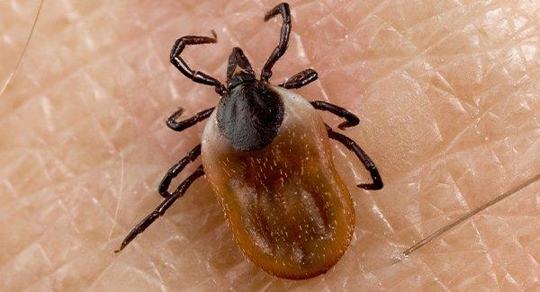There aren’t many things more disconcerting than finding a tick somewhere on your body. Ticks feed on the blood of many different animals which means they can transmit a variety of harmful bloodborne diseases. However, not every tick bite results in a disease. It is important for you to know what you should do if you are bitten by a tick here in Connecticut. That includes knowing which signs and symptoms mean you need to seek medical attention. You need to know the steps you can take to make your Connecticut property less exposed to ticks to protect you and your family from these dangerous pests.
Ticks Common To The Area
While there are many different tick species in the world, here in Connecticut, we only need to worry about a couple. Some of the most common ticks in the area are black-legged ticks and American dog ticks.
Black-legged ticks, often called deer ticks, are orangish-brown in color with dark-colored legs. They grow to be about 1/8th of an inch in length and have flat oval-shaped bodies. However, their bodies will engorge after they have fed on a blood meal. American dog ticks are brown with white markings on their bodies. They grow to be about ¼ of an inch long but will grow after feeding on a blood meal.
Ticks often attach themselves to hosts without the host ever knowing. They will hang out on blades of tall grass or in brush and wait for potential hosts to pass by them. Then, they latch on. Ticks are usually brought onto properties by wildlife that is carrying them.
Are Tick Bites Dangerous?
Because ticks feed on the blood of a variety of animals, they can transmit harmful bloodborne diseases. However, not every tick bite results in a disease or infection. It is important to know the signs of a tick bite that could lead to something more serious. That way, if you find a tick on your body, or simply notice a bite mark, you can monitor it for the telltale signs of something more concerning.
Tick bites appear as small raised bumps, not unlike the bite of a mosquito. However, a tick will most likely only bite you once. If the bump begins to turn into a rash, especially a target-shaped rash, contact medical professionals right away. Furthermore, if you experience nausea, headaches, muscle stiffness, fevering, or chills, seek medical attention. Some diseases that tick bites have been known to cause include Lyme disease, anaplasmosis, babesiosis, ehrlichiosis, and tularemia.
How To Lower Tick Populations Around Your Property?
As previously stated, ticks are often brought onto properties by other wildlife that is carrying them. Therefore, making your property less accessible and appealing to wildlife should help to limit your exposure to ticks. Furthermore, keeping your lawn well-maintained and free of dense vegetation will also help to keep ticks out. To accomplish these, you need to:
- Put protective fencing around vegetable gardens.
- Pick up any fallen fruits or vegetables from your yard.
- Keep outdoor dining areas free of food debris and trash.
- Pick up any uneaten pet food.
- Keep your lawn well-manicured.
- Trim back any vegetation around your property.
- Pick up any organic matter, debris, and leaves from your yard.
For More Tick Advice & Assistance
If you have any further questions about tick control on your Connecticut property, contact the professionals here at Big Blue Bug Solutions right away. With over 80 years of experience, we know what it takes to keep ticks off of your property. So, don’t delay. Give us a call.

